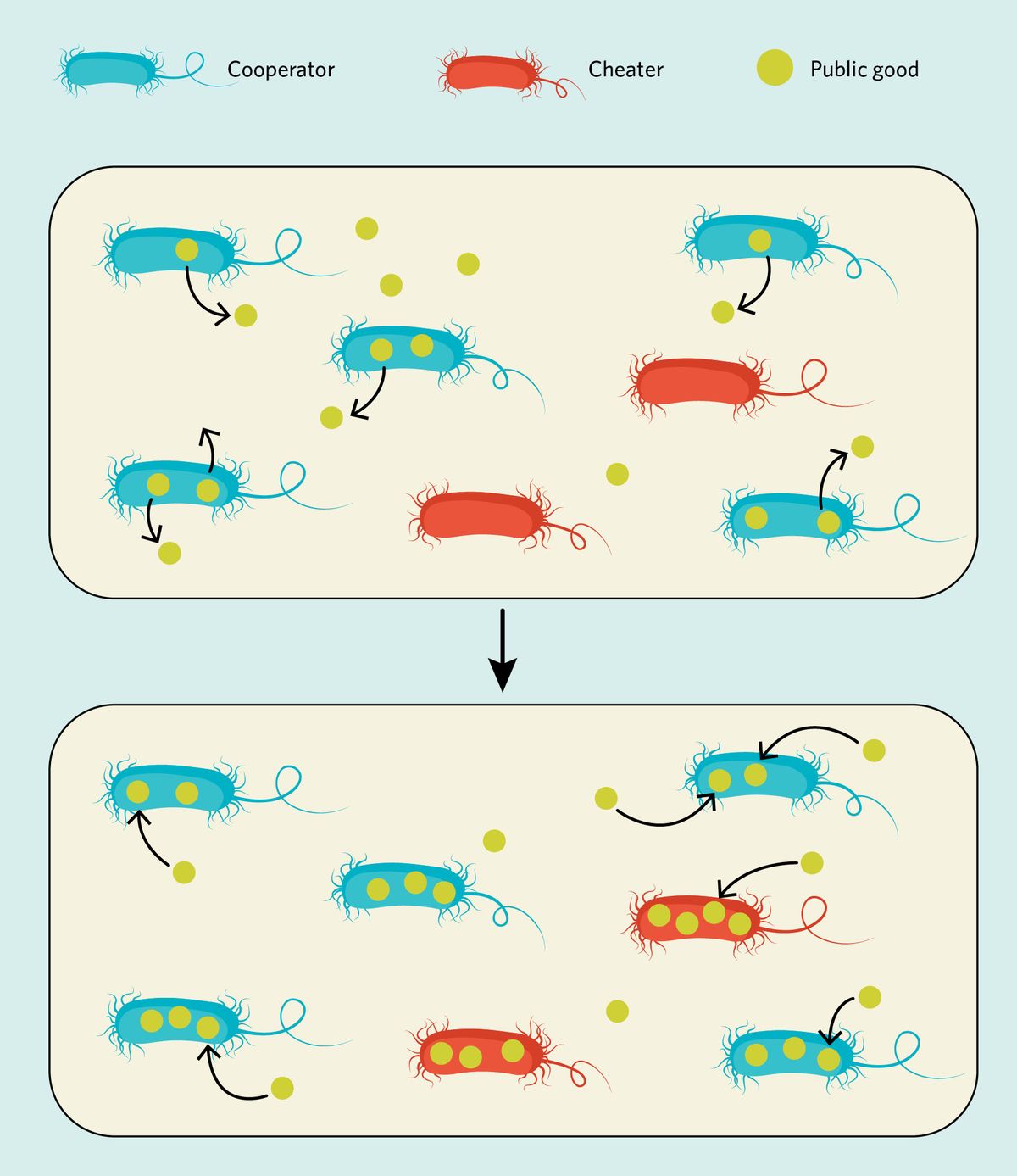In cooperative bacterial communities, cheaters may arise. These bacteria do not pay the cost of producing public goods but still consume the shareable resources produced by other cooperative bacteria.

© Ashleigh Campsall
Strategies used by cooperators to curb the cheater population in a bacterial community

© Ashleigh Campsall
Spatial structuring and kin selectionAs cooperators build biofilms, they keep their kin close and limit cheaters’ access to communal resources. |
Kin discriminationCooperators discriminate kin from non-kin and share resources only with highly related cells. |
PolicingCooperating bacteria can sanction cheaters by producing diffusible toxins together with a resource. |
Read the full story.
